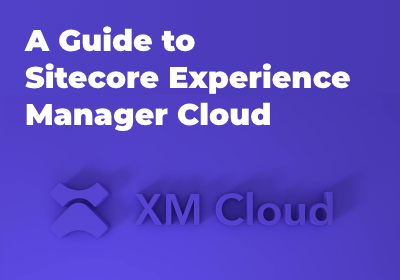Need An Accurate Estimate For Your Sitecore XM Cloud Migration Project? Kickstart Your Journey Here!
Get My EstimateToday, digital channels are the most preferred way for the customers to engage with brands. Brands have to communicate in unique ways to not only reach but impress the customers. This is where personalization is necessary. But what is important for personalization? Segmentation.
Segmentation is extremely crucial in providing personalized experiences to your customers, especially in the e-commerce industry. If this is tackled well, the brands can convey their message and give exceptional experiences across geographies, time zones, and languages for their huge number of customers.
How do you do segmentation, personalization and send the right campaign to the right audience? Using the Sitecore CDP. In this blog, we will understand in depth why segmentation is needed and how Sitecore Customer Data Platform will help you with it.
Let us first understand the two terms - “Segments” and “Personas.”
Segments
Segments are those website visitors that share the same characteristics and can be bucketed together. They can be grouped on the basis of industry, geographies, their needs, their stages in the customer buying journey, etc.
For example, Asian, female, engineers, between the ages 30-40 years old. This is a segment. Segmentation enables you to create experiences that are similar and will benefit these visitors as a whole group.
Personas
Personas are basically fictional customers that you create based on the research and the customer data that you have collected. Different personas have different aims, goals, objectives, style of communication, wants, desires, needs, behaviors and customer journeys.
For example, Jane, a 25-year-old French business analyst who is on the way to become a manager, loves yoga and football, and prefers audio over content or videos.
Marketing teams usually use personas for guiding the creation of user experiences as well as customer journeys.
Basically, segments are ways to get your customers whereas, personas can be used as tools for helping you in communicating with segments.
Now, let us understand why segmentation is important?
- Segmentation helps marketers make relevant marketing messages for giving the customers more personalized experiences.
- By knowing your customers through segmentation, you can build retention strategies and also focus on increasing the Customer Lifetime Value of each customer.
- Through segmentation, you get better insights of your customer database. This gives you the ability to spot trends and patterns and understand in detail the customer behavior.
- Segmentation also helps you in acquiring your customers by allowing you to manage your resources for high-value and at-risk customers.
- You can also make your customers feel special and increase brand loyalty. This will improve customer satisfaction.
Sitecore Customer Data Platform usually has 5 important stages:
- Unification
- Identification
- Real-time audience segmentation
- Customer data analysis
- Activation
Through unification, the Sitecore CDP collects all the customer data from various digital touchpoints and inputs them in the platform. The data that it collects could consist of:
Behavorial data for example user actions, user interactions, and digital engagement through website or through mobile applications.
Demographic details of customers for example names, their addresses, contact details, anniversaries and birthdays, etc.
Data of transactions for example purchase history, returns, exchanges, preferred payment methods, etc.
Metrics and insights derived from advertising campaigns for example engagement on different channels, reach, impressions, etc.
For the unification of all this data, the CDP usually uses web tracking tools, marketing automation as well as data warehouses.
Once the unification is done, the identification process starts. This is where we can say the process to segmentize the data starts. Identification basically means creating a digital identity. CDPs create customer identities (which can be called as something similar to personas.)
Basically, in identification, each customer’s data is taken, and a profile is created to understand their behavior, their patterns, their preferences, their digital history and their likes and dislikes among other factors.
Just like this, a wide range of data is unified and built into separate customer profiles, that will provide a comprehensive view of the customer identities. This 360-degree customer view will be across channels, devices and also systems.
After the customer identities are built, the segmentation is done. Through the traits and the characteristics of the customer's identities, you can create various segments of audiences and also save them in real time.
The Sitecore CDP connects all your tools and data sources for helping you in generating lists and categories based on attributes, metrics, events, etc. The data which is of least use to your business is separated and the data which is useful is kept aside and saved for further steps.
Sitecore CDP conducts segmentation of your customer data in real time to make sure that you can smoothly run your marketing campaigns as well as focus on other business functions.
We have established why segmentation is of utmost importance in the e-commerce business and Sitecore CDP is the best way to help you do that.
Want to improve your Sitecore platform? Get a free audit now!

 About Us
About Us
 Careers
Hiring
Careers
Hiring
 Our Story
Our Story
 Let’s talk
Let’s talk














